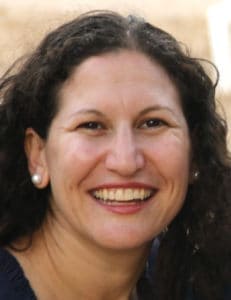
Almost every day is a long battle of “Pain vs. Pills.” But sometimes I wake up feeling like someone hit my head with a baseball bat or ran into it with a truck while I was sleeping. My head is too often wrapped tightly in an ice pack, the lights off, and my head smooshed against a pillow. Another wasted day. Another wasted night. Another wasted weekend.
I decided to share “My Migraine Story” on my 44th birthday because far too many people endure this invisible pain and we need to share our stories so that others can understand our experiences. Day after day people living with migraine disease put on a happy face and pretend to feel much better than they actually feel, all for the sake of others. We try to pop our pills inconspicuously, not wanting to ruin the mood. But we want to be there, a part of it all because we’ve already missed too much.
The first migraine attacks I can remember began when I was around eight years old. I recall trying to rest in my parents’ bed in a darkened room with a cold washcloth on my forehead. From then until I was in college, I would experience migraine attacks once a month or a few times a year. Every single year of high school, on the first day of school, I’d get a migraine attack at the end of the day. I’ll never forget how it felt to climb the steps of the school bus to go to a tennis match during a migraine attack. I didn’t want to disappoint anyone, including my teammates. Not too much changed during my college years.
My migraine disease started to take over my life when I began my first teaching job in my 20s. I would call my neurologist often, in utter desperation, looking for some advice on what to do or what to take. This was the beginning of the unending attempts at preventive meds.
I began to picture my wedding day, but not in the typical, idyllic way. I knew that I would have to keep my triptans close to me because they almost always stop the pain. Growing up, I imagined that I would get married and have a family. Plans change. I am very happy with the life that I have, but I’m not happy that the decision wasn’t entirely mine — migraine disease stole that from me. I couldn’t imagine trying to raise a family while living with chronic daily migraine.
I hate disappointing people, and even in my 20s, I realized that many people did not believe me when I had to cancel plans due to migraine disease. The loneliness that I already felt increased to a whole new level. Most recently, I addressed these feelings with some of my friends, and I explained how horrible I feel when I have to cancel plans. Making plans is always accompanied by a caveat that I may have to cancel, even though I don’t want to miss out on the fun.
I had always prided myself on my work ethic, but migraine disease took that away from me. At the beginning of the 2010-11 school year, my neurologist wrote a letter to the principal at the school where I was teaching to explain my chronic daily migraine. My principal empathized and shared that his brother also lived with migraine disease. By the spring, that same man questioned if my migraine disease was real because I had to miss so many days of school that year. I knew I could no longer keep up the lifestyle of full-time teaching, and that’s when I decided to make a major change and move abroad.
When I moved to Barcelona, I had a “honeymoon phase” when my migraine disease seemed to improve, but then it returned. In Spain, I didn’t have to deal with insurance companies weighing in on how many triptans I could take, I also didn’t need a prescription. Eventually, I had worked up to taking triptans not only every day but sometimes up to four times a day. That’s when I set out to find the best migraine specialist in Barcelona.
I found a doctor who helped many people living with migraine disease and, hopefully, one day she will find a cure. Besides getting me started on new preventives and limiting the number of days in a month that I could take triptans, this doctor took the time to explain “the migraine brain” to me. She also described the healthy habits I needed to implement; I’m still working on those, but I know I need to be disciplined with my sleep schedule, exercise regularly (even when I feel like my head can’t take it) and eat right.
We all live with pain, whether visible or invisible, physical or otherwise, and we all deserve to live a pain-free life. I am a surprised that as desperate and hopeless as I feel when I’m in the throes of a migraine attack, when I come out of it I somehow become hopeful again. After 20+ years I still have hope that the next 20 years won’t be like the last 20.
